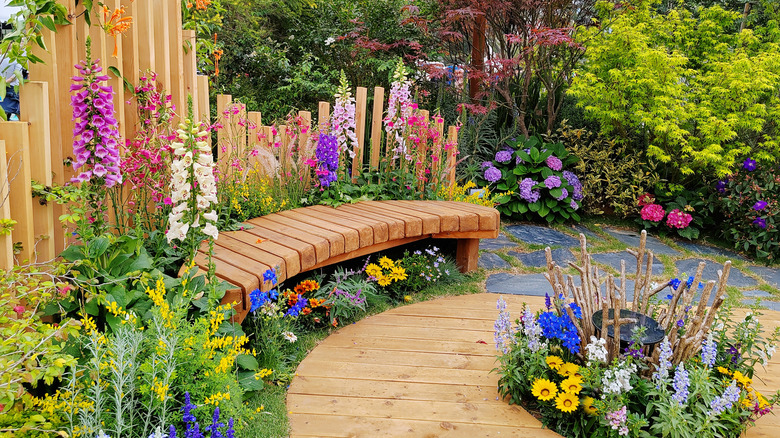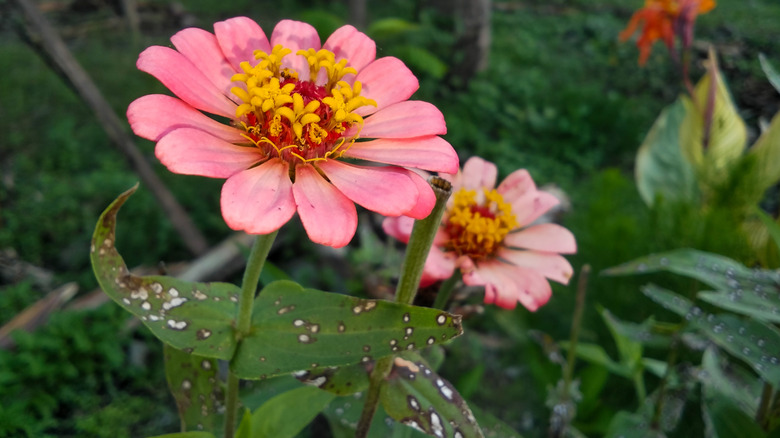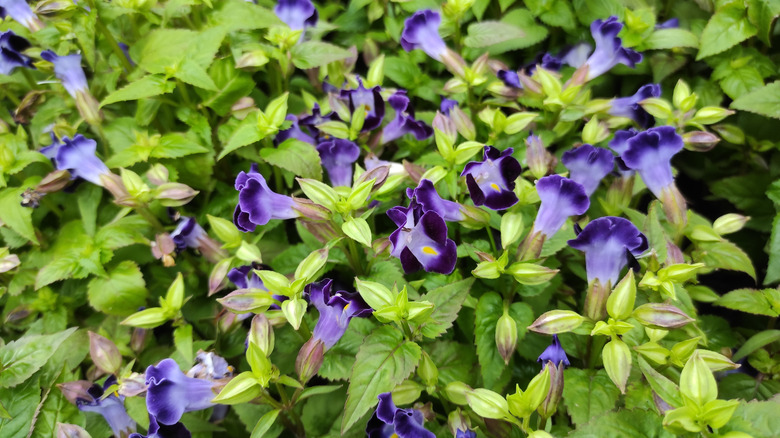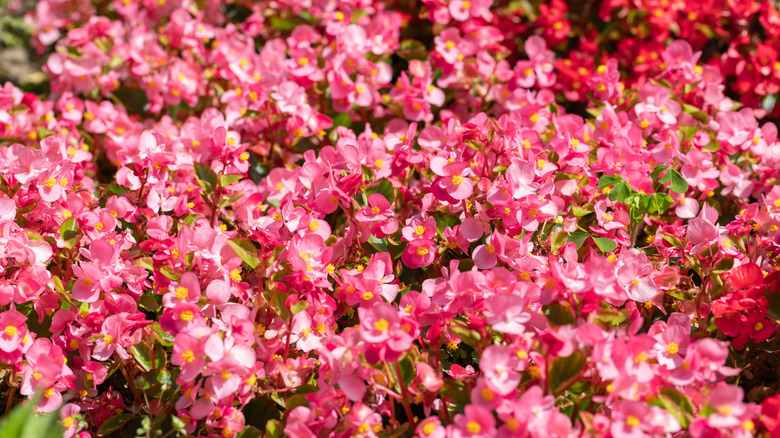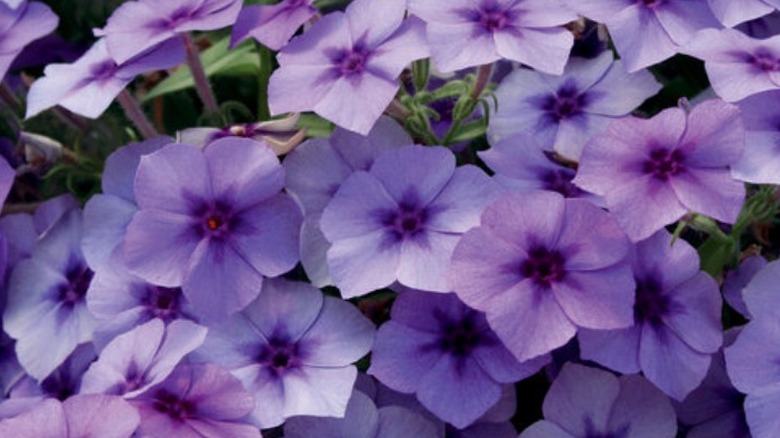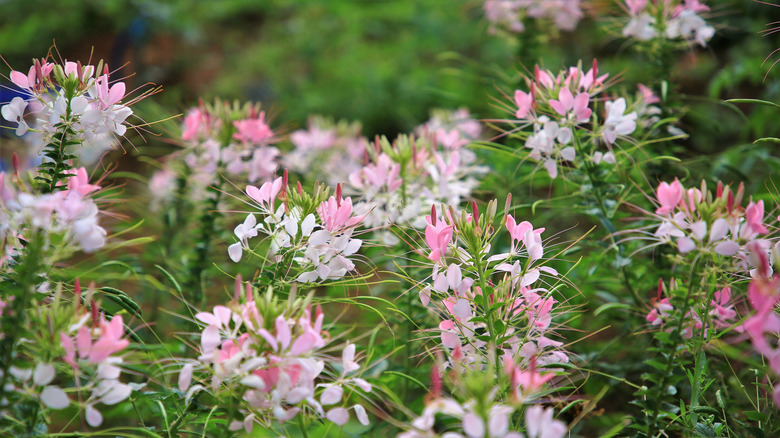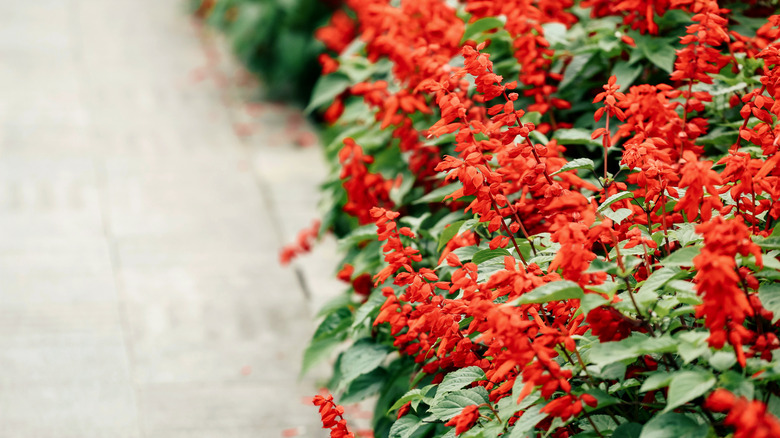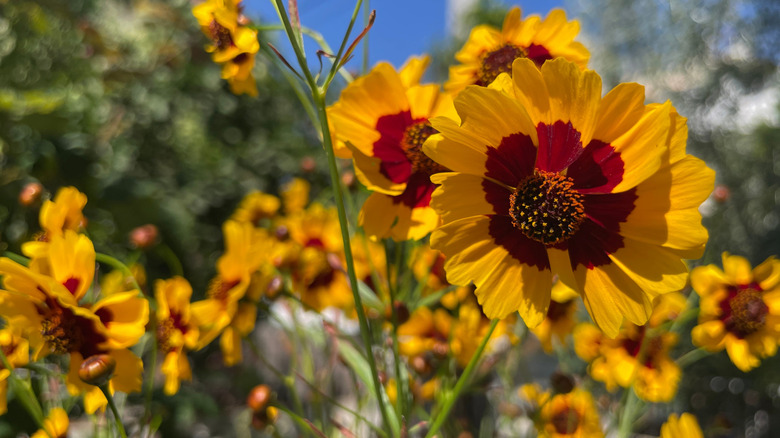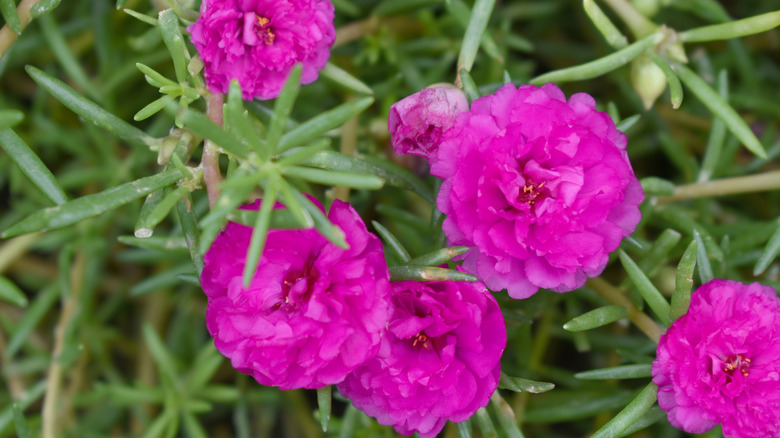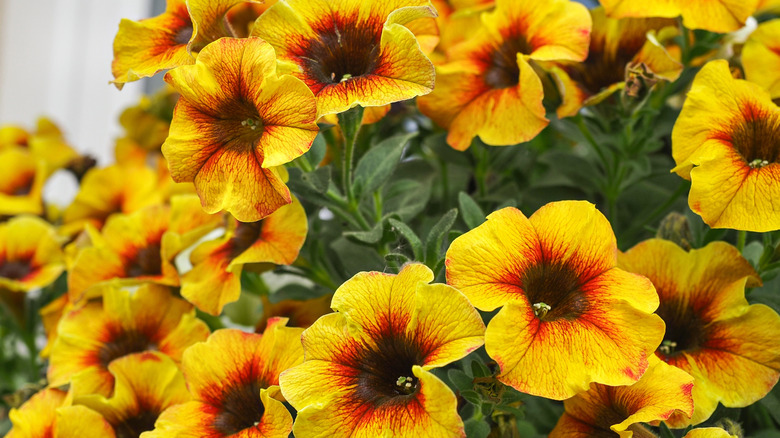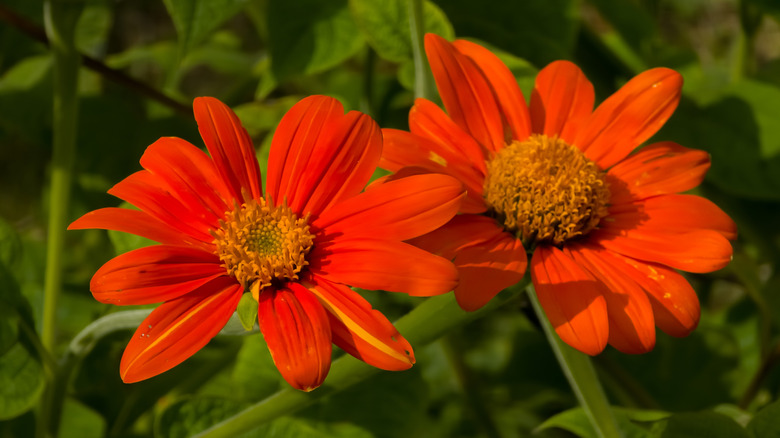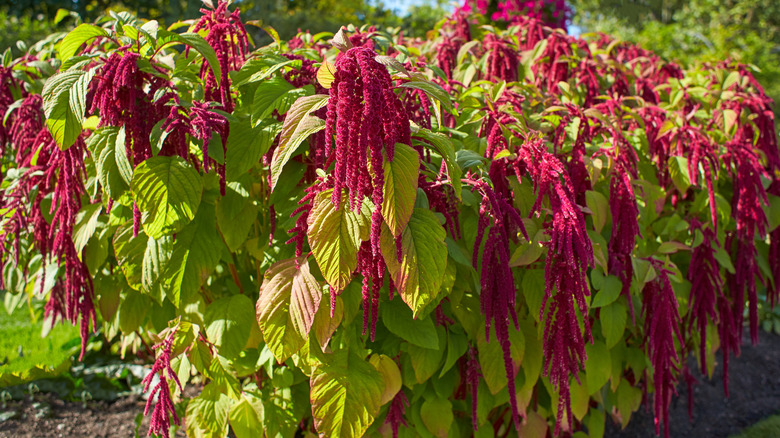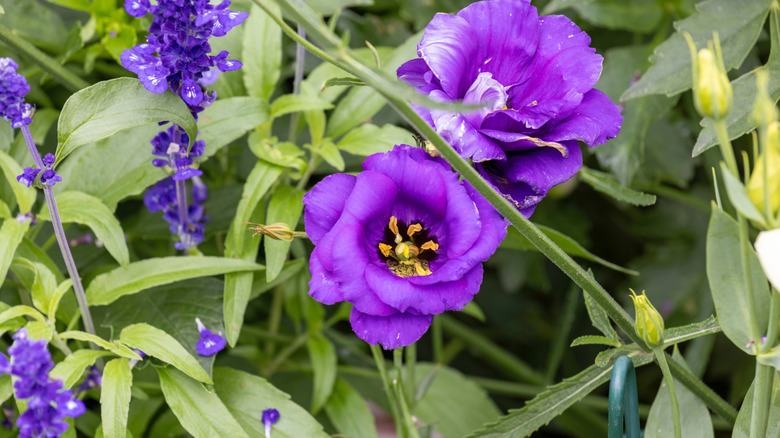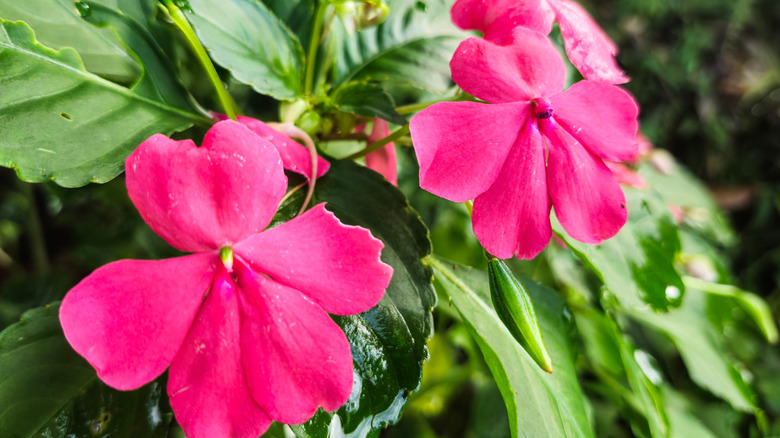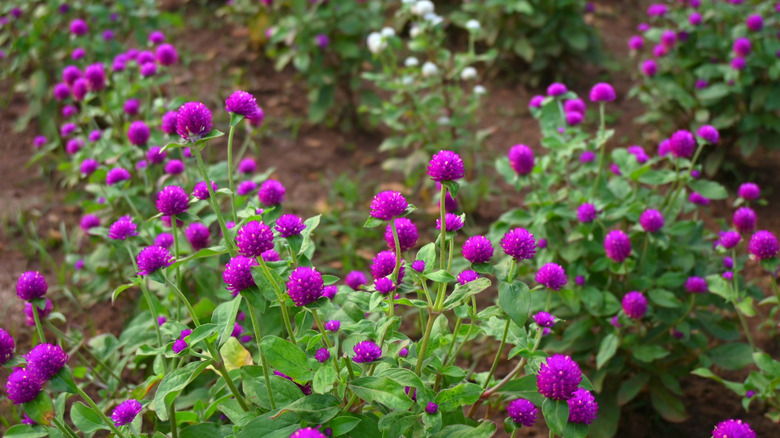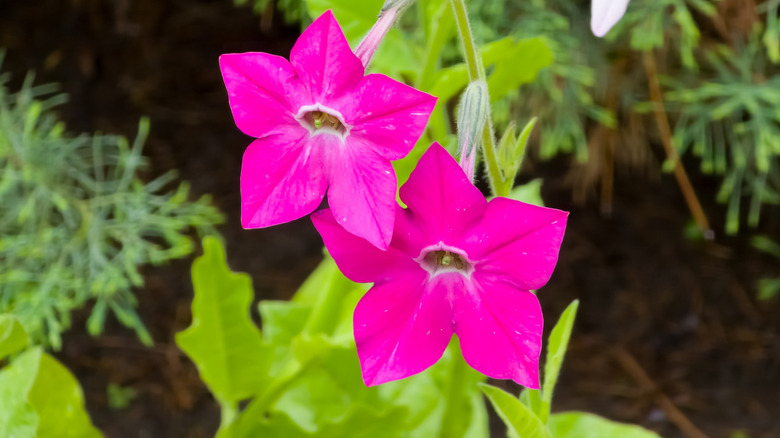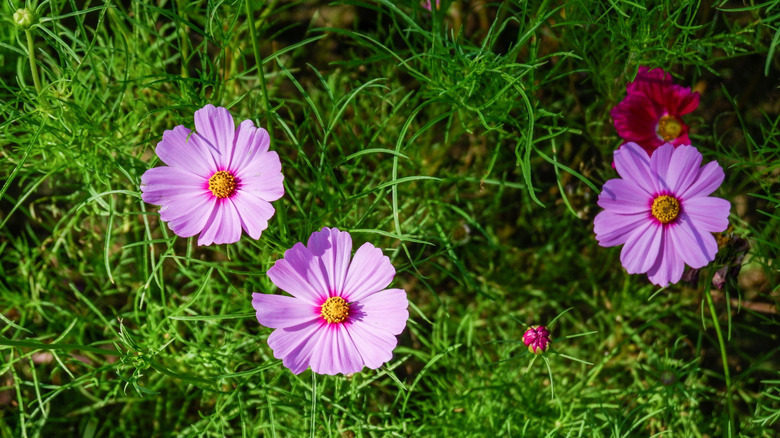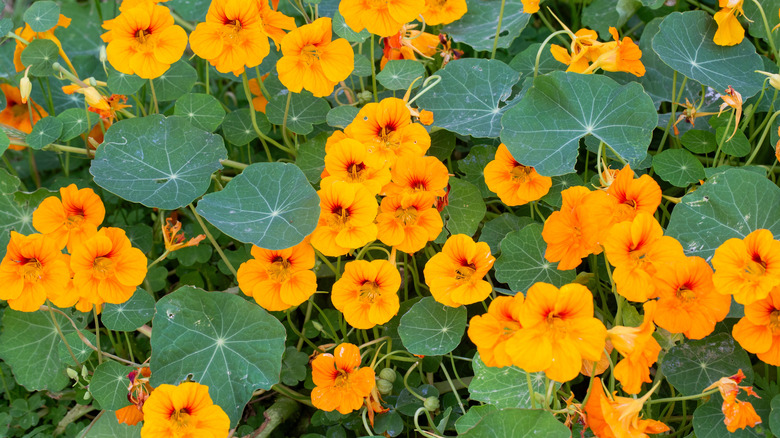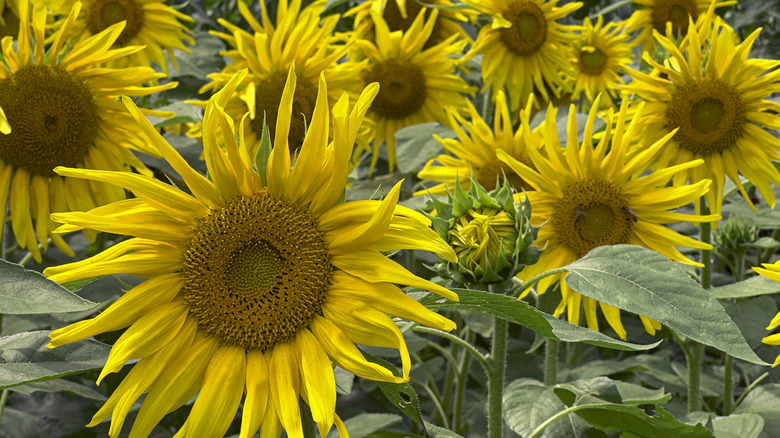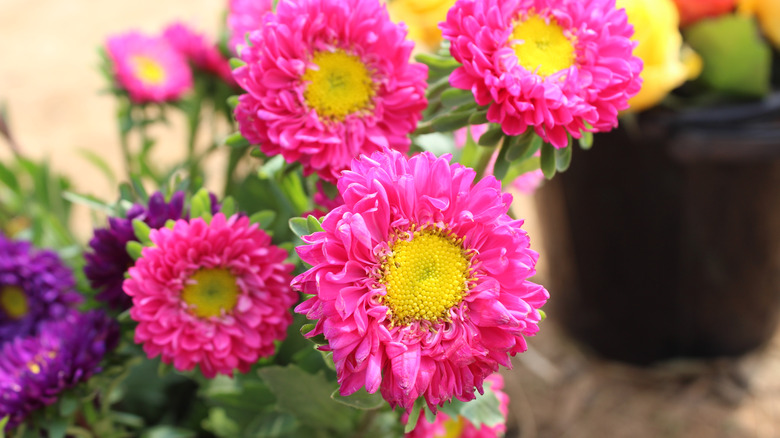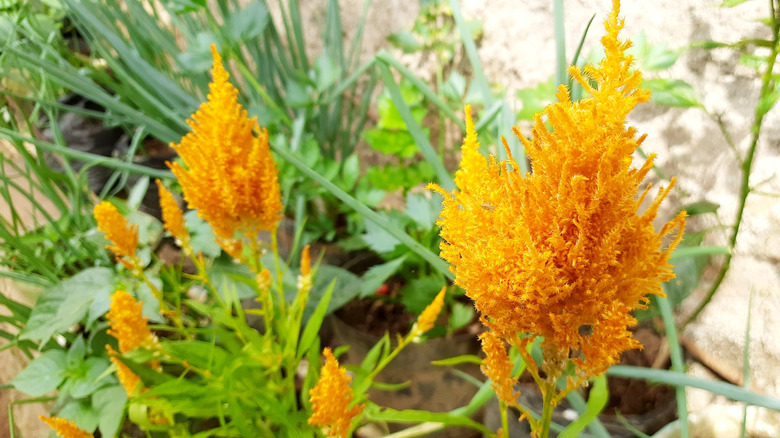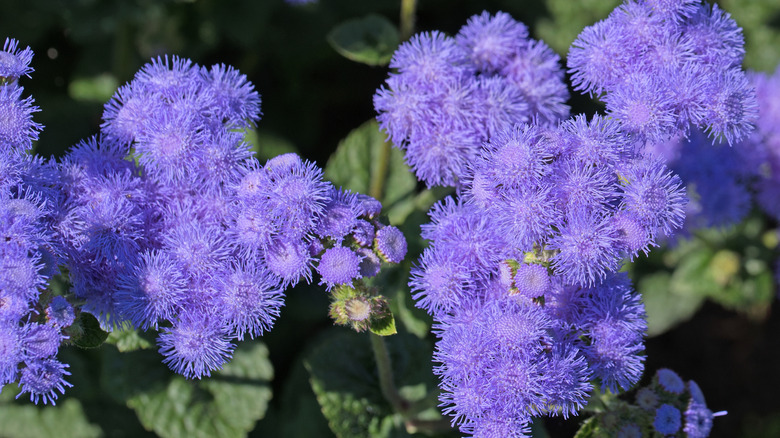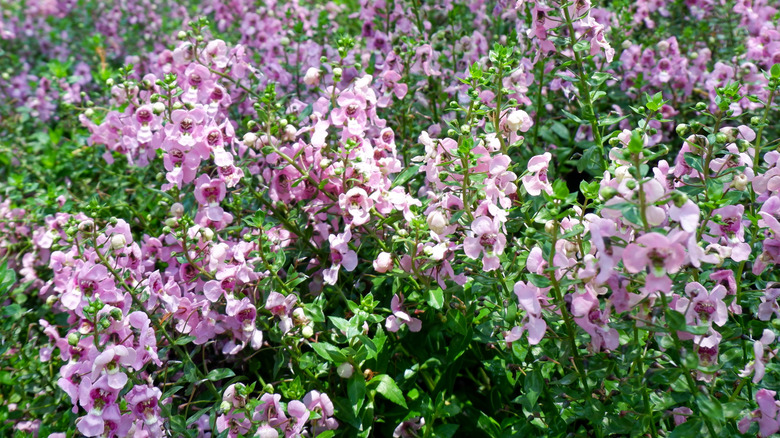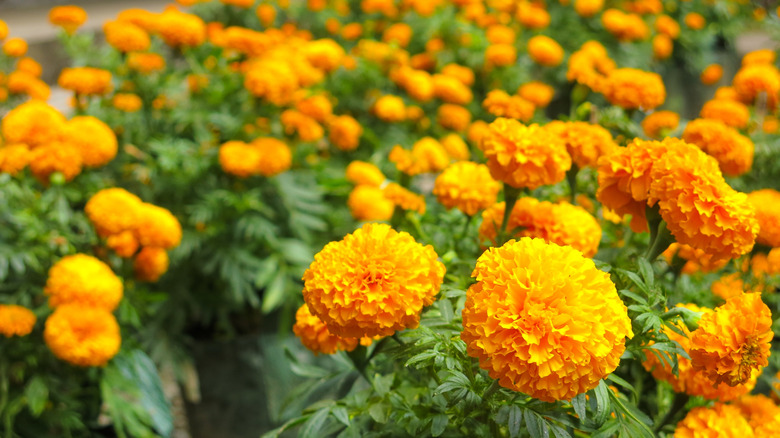Spruce Up Your Late Summer Garden With These Colorful Annuals
As the summer winds down, so do many of our favorite perennials. This leaves our landscapes looking drab and boring — even more so if pests have had their way over the warm months. With time left for cool-season plants and fall colors to come into their own, decking our beds in seasonal annuals that can brave the summer heat just seems like an obvious choice to spruce up our gardens.
Luckily, there are various gorgeous annuals that will introduce bright colors, fragrance, and pollinators to your garden during late summer. Think along the lines of zinnias, scarlet sage, wax begonias, million bells, cosmos, African marigolds, and many more, as you'll discover shortly. What sweetens this deal further is that most of these plants continue blooming through frost! Naturally, to enjoy this instant visual boost, you must make sure to grab seedlings or grown plants (depending on the length of your growing season), rather than seeds. That being said, include any (or more) of these 23 annuals to beautify your late summer garden.
Zinnia
There's a reason zinnia (Zinnia elegans) remains unabated in popularity. Blooming in all sorts of vivid colors, except blue, these annuals instantly brighten the landscape — the lot of butterflies and hummingbirds visiting them are the cherry on top. With regular deadheading, you can expect the summer blooms to last through fall until the foliage is frost-killed. Zinnias require lots of sun and excellent drainage, both to produce their best blooms and to minimize disease pressure. Since they're easy to grow with seeds, harvest them so you can enjoy an endless supply of colorful zinnias every year.
Wishbone flower
Add a pop of color to shaded sites until the seasonal frost with the lilac-purple petals of wishbone flower (Torenia fournieri). If you would like to maintain a summery vibe, you can find cultivars with red and pink blooms, too. Wishbone flowers need consistently moist soil. In case you've planted them in a sunny site, be sure to water them more and mulch the beds for improved moisture retention. Wishbone flowers are low-growing annuals and can be used to define edges and borders. You may also grow them in containers and overwinter inside.
Wax begonia
Except for the warmer ranges covering USDA Hardiness Zones 9 to 11, wax or bedding begonia is grown as an annual across the country. These low-maintenance flowers stay compact, topping out under 1 foot when fully mature. Pink, burgundy, or white blooms cover their foliage right through fall. Wax begonia can adapt to diverse light conditions, from full sun to deep shade, though plants with bronze foliage often prefer more sun. Direct contact with wax begonia can irritate the skin and accidental ingestion of plant parts can cause nausea or kidney failure, so choose their location carefully.
Southern Blaze 'Blueberry' phlox
Currently selling under the Southern Blaze series, 'Blueberry' phlox (Phlox drummondii Southern Blaze 'Blueberry'), this flowering annual was initially introduced under the Intensia group by Proven Winners. Compact plants that stay about 16 inches up and across, their green mounds are chock-full of purplish-blue flowers throughout summer until hard frost, sans deadheading. You can prop them in containers or in garden beds to catch the butterflies zooming around their blooms. However, if rabbits are regular visitors, skip this plant, or they might prune the foliage before you see any flowers. Plant them in full sun.
Spider flower
If you're looking to add height and color to your drab landscapes in late summer, consider interplanting spider flower (Cleome hassleriana). Right through frost, their tall stems are swamped in rose, white, or purple petals that unfurl from bottom to top. Hummingbird moths, beneficial bugs, and other pollinators visit these plants. Spider flower isn't picky about its location, thriving in average conditions, but will flower better in full sun sites. If you want these annuals to self-seed in your yard, stick to older varieties from the Queen series, as the latest hybrids usually produce sterile seeds.
Scarlet sage
Turn your beds into an absolute showstopper for hummingbirds with scarlet sage (Salvia splendens). These popular annuals inject a massive jolt of color when massed, considering both their sepals and petals are a cherry red and contrast beautifully with their green foliage. In fertile soils with full sun, they'll keep blooming non-stop through frost and year-round in mild climates. As they can grow 3 feet tall, use them toward the far end of beds and borders. Avoid growing bedding cultivars if you're meaning to attract pollinators, as they may be stripped of nectaries during breeding.
Plains coreopsis
If you've got a dry, hot spot in your landscape where you can't run your hose, snap up a few plains coreopsis (Coreopsis tinctoria) plants from the local nursery as these southern natives will thrive in such areas. Heat-tolerant, plains coreopsis is fairly unpopular with deer, and can be used to define borders. It grows in most soil conditions, including shallow and rocky. Their yellow petals surround mahogany centers that teem with nectar and unsurprisingly draw in all sorts of pollinators. However, you'll need to diligently remove faded blooms to prevent naturalization unless that's the aim.
Moss rose
If you're looking to populate dry, shallow, lean soils, moss rose (Portulaca grandiflora) can be an outstanding addition. Its drought and heat tolerance, paired with its succulent leaves, enable it to thrive in the driest of sites. Without requiring much attention, these summer annuals will carpet your beds in rose-like flowers, provided there's enough sun. When the sky is overcast or when it's nearing dusk, these flowers will fold into their kernel form. If you feel this display is too short-lived, select hybrid varieties instead, as they've been bred to stay open for much of the day.
Million bells
Although cold-hardy in Zones 9 and warmer, million bells (Calibrachoa x hybrida) are typically grown as annuals elsewhere. They produce tiny petunia-esque flowers in a rainbow of colors all summer long, regardless of the heat, until the first frost. Since they're under 1 foot tall but extend twice as wide, you may utilize them to establish a beautiful, flowering carpet to spruce up ornamentals in their off-season or to complement other hummingbird-friendly flowers. Million bells prefer full sun. Bear in mind that they've been bred not to produce many seeds, so you'll need new plants each year.
Mexican sunflower
If you have a patch of poor or infertile soil, you can spruce it with Mexican sunflower (Tithonia rotundifolia) that does well in such inhospitable conditions. However, you may need to offer support or plant these annuals in multiples, as they can grow quite tall and their hollow stems can't hold their own. If plenty of birds visit your yard, expect the boisterous ones to break a twig or two. Mexican sunflowers offer orange-rayed flowers mid-summer onwards and can be encouraged to keep blooming throughout fall with regular deadheading. They grow best in full sun and are drought-tolerant.
Love-lies bleeding
Named quite dramatically, love-lies bleeding (Amaranthus caudatus) perhaps invokes a sense of bleeding love through its scarlet red tassel-shaped flowers that nod down to the ground and stain the leaves they touch. They can grow nearly 5 feet tall and 2 feet across, and look great cascading over containers. As they're drought-tolerant, even tardy caregivers can grow them successfully — they won't mind if they aren't given their weekly sip of water on time. You may also grow them in borders with proper stakes for support. Don't forget to save their seeds to plant them again next year.
Lisianthus
Barring Zones 8 through 10, where lisianthus (Eustoma grandiflorum) may successfully overwinter outdoors, it's typically grown in annual beds in cooler climates. Purple blooms with white undersides dance above their grayish-green foliage in late summer until frost. Locate these drought-tolerant plants where they receive morning sun but remain shaded from the extreme afternoon heat. If you're looking to use them in containers, opt for dwarf cultivars as they don't grow taller than 8 inches by full maturity. Ensure good drainage, as they're predisposed to fungal diseases.
Impatiens
It isn't too late to introduce impatiens (Impatiens walleriana) to your garden beds — their apricot, pink, or peach blooms remain on display until the first fall frost. While they can survive the winters in Zones 10 and 11, they're typically grown as annuals elsewhere. Since impatiens don't do well with sun exposure, you must eke out a shaded site for them, and yes, this includes the ground shaded by tall tree canopies. These rabbit-resistant annuals require slightly acidic, moist soils. You may either save their seeds or take stem cuttings to replant these annuals next season.
Globe amaranth
Thanks to its heat tolerance and low irrigation requirements, globe amaranth (Gomphrena globosa) is a perfect way to add color to rock gardens or xeric landscapes. While most are likely familiar with their purple, clover-shaped flowers, they're also available in pinks, whites, and yellows. Globe amaranth can grow between 1 and 2 feet tall and can be used to frame walkways or patios. Planted in full or partial sun, the blooms will last through autumn. However, be sure to mulch their beds to minimize the dirt splashed on their leaves during rainfall, or the plant will look squalid.
Flowering tobacco
Those keeping a moon garden can complement their plantings with flowering tobacco (Nicotiana alata), or Jasmine tobacco. With their intoxicating fragrance, these annuals draw in pretty moths, and the white blooms weave a spectacular sight through October. Where plenty of space is available, grow taller cultivars from the Sensation or Whisper series. The Starship, Nicki, and Saratoga series offer more compact forms. If you'd rather add plants that bloom during the day and don't mind sacrificing fragrance, grow their hybrids (N. alata x N. forgetinana) instead. Since they include nicotine, keep pets and kids away.
Cosmos
Cosmos can reliably add much-needed color throughout the summer and fall when its famed pink, purple, orange, or yellow flowers are in bloom. Even butterflies and bees have a hard time resisting their allure. These fast-growing annuals are sun worshippers and require access to direct sunlight for the major part of the day. They're indifferent to soil texture and can even grow in alkaline soils. Their drought tolerance makes them a suitable choice for water-wise landscapes. Use the taller varieties in front of foliage-heavy shrubs or perennials so they're easily supported.
Common nasturtium
Common nasturtiums (Tropaeolum majus) spark joy when their orange flowers pirouette among the parasol-shaped leaves in the breeze from summer through frost. They're also nice-to-haves if you enjoy garnishing your salads with blooms — theirs are edible — or seeds for a pop of pepper. Additionally, you don't need to provide them with any fancy growth conditions, as common nasturtiums thrive in poor soils and are carefree about pH levels. Tuck them in pollinator beds but away from the reach of your pets, who may get sick on chewing these plants. Snip off faded blooms to limit seed production.
Common sunflower
In diligently watered beds exposed to ample sunlight, add common sunflower (Helianthus annus) for late summer color. These annuals also happen to be the best sunflower varieties for attracting birds to your garden because they love their oil-rich seeds. However, you may have to tolerate withered, unkempt foliage for that duration. As bees and butterflies help move their pollen, you can expect varied pollinator action. Note that if you're growing hybrid cultivars, they won't usually come true to seed and must be bought anew for next year. Iowa treats these annuals as noxious weeds.
China aster
One for the bees, China aster (Callistephus chinensis) bursts out showy flowers in purple, blue, gold, or pink, becoming the highlight of summer-fall beds. The Dutchess series and 'Giants of California' offer huge blooms, while the Ribbon series includes more compact plants. China aster can grow in full sun or light shade, provided the soils are organically rich, moist, and drain well. Locate them in cottage, cutting, or container gardens. Because China aster can contract myriad diseases, including the much-feared aster yellows, monitor its growth regularly and switch its location if you plan on growing it yearly.
Celosia
Celosias or cock's combs are unique-looking garden flowers that will have summer beds bursting with color through October. In bloom, their foliage is often topped by pink, orange, or red flower spikes, luring in butterflies. For the maximum impact, plant them en masse. But if you don't want them self-seeding, plant them as specimens instead so you can easily deadhead them before seed production — this should also promote reblooms. Celosia requires at least eight hours of direct sunlight and soils rich in organic matter. Watering them consistently throughout the growing season is important for the best blooms.
Bluemink
Inject a bolt of bold blue, pink, or white color in your garden beds with bluemink (Ageratum houstonianum), as this low-growing annual will remain in bloom until the first frost. Most pests, including rabbits and deer, care little about its foliage, though butterflies think otherwise (luckily!). Bluemink can grow in full-to-part sun exposure but desires rich, moist soils. Note that it can self-seed profusely, though the hybrids behave better. So, be sure to locate bluemink in informal or cottage gardens. Pair their blue flowers with pink begonias or yellow cosmos for a bright contrast befitting late summer.
Angelonia
Angelonia or summer snapdragon (Angelonia angustifolia) is massed in annual beds and borders in Zones 8 and colder. Through September, their cute mound is smothered in mauve, blue, or bi-color, two-lipped blooms that also fill the air with a fragrance reminiscent of grape soda. Better yet, you hardly need to deadhead these annuals to maintain flowering quality. Angelonia grows best with over six hours of direct sun and tolerates drought and dry conditions, assuming their beds are fertile and duly mulched. You may alternatively pop them in containers, though overwintering them inside is usually difficult.
African marigold
Mass plant African marigold (Tagetes erecta) in your late summer beds or containers to enjoy the whiff of pleasant aromas wafting from the typically yellow and orange or bicolor blooms produced on this annual. Full sun exposure is a must, though if the late afternoons continue to be hot, you may need to shade the plant. You must regularly remove spent blooms, or the branches may split under their weight. African marigolds are excellent in pollinator gardens, as they attract butterflies. Note, however, that their sap and petals can irritate the skin, eyes, and nose if you're sensitive.
